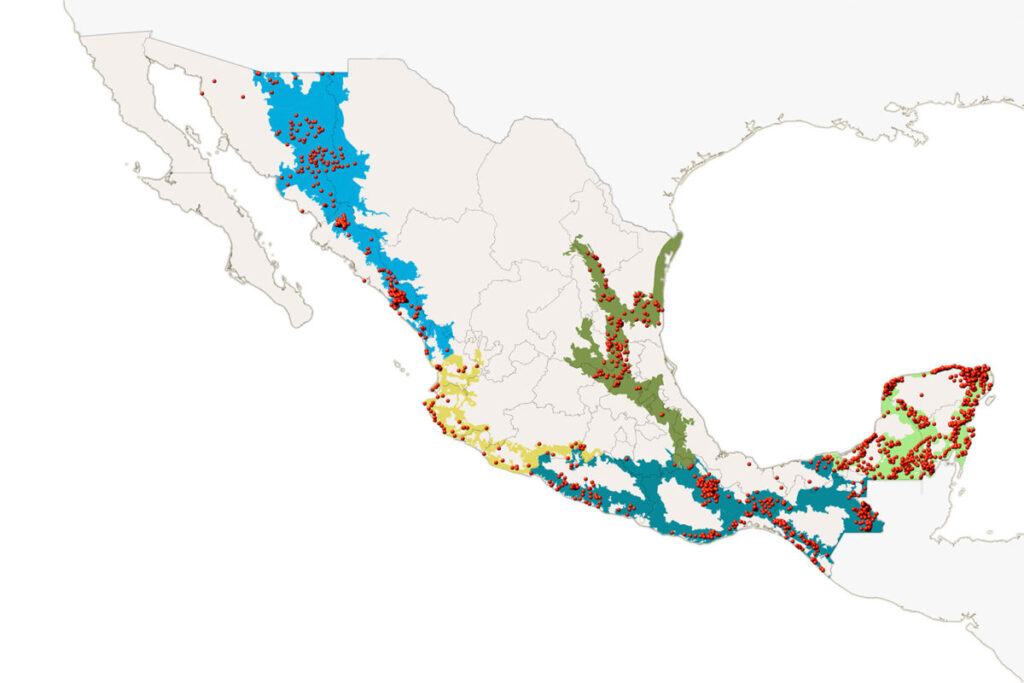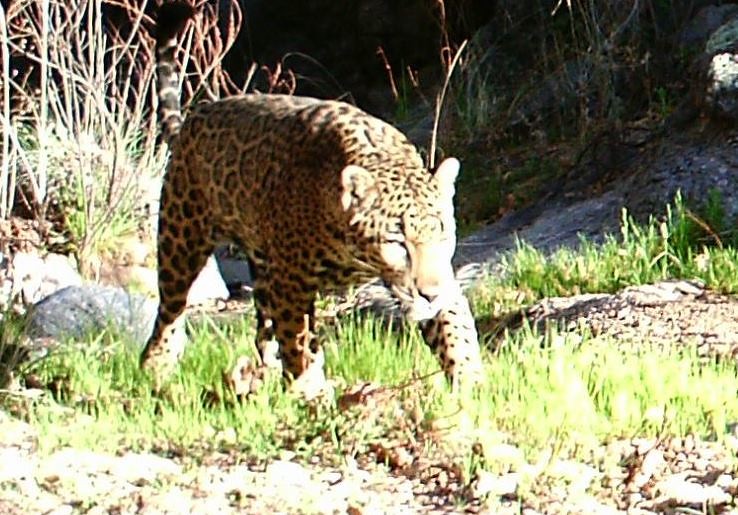Wild Jaguars are a native resident of the USA. Once roaming as far north as the Grand canyon, they roamed over around 1/3 of its lands. It is not a natural migration therefore that has therefore meant that Jaguars are extremely rare in the USA.
Currently there are about 173,000 Jaguars living in the wild, meaning that taken as a whole, the Jaguar is far away the safest of the big cats (Lions who come in second, have a population of around 20,000). However, if you look at the part of the Jaguar population that lives in north America, their position becomes far more precarious.
Currently, it is thought that Mexico contains a wild jaguar population of about 4800.

Credit: Ceballos G et al 2021
When you look at this map, it becomes pretty obvious why the most common part of the USA for their sightings is in Arizona.
Jaguars, alongside wolves, grizzly bears form the top of the food chain in the USA (under the supreme hunter – humans, which with our guns a child can defeat).
Furthermore, there are large areas of the USA which could happily support more of all of these predators, but for the fact that human hunters do not want them present, so that there is more for them to hunt.
Human hunting rarely controls populations effectively. Generally, human hunting does one of two things. Either it leads to an excess of the prey animal, so as to allow the land owner to sell more hunting permits, or it leads to a great reduction in the number of the animals, and have in many places led to the local or even total extinction of a species.

Currently, there are not many wild Jaguars living in the USA. It has been made such an inhospitable habitat, that any Jaguars that live in the USA live near the border with Mexico and spend large portions of their lives on the Mexican side. Recent research has shown that while historical views suggest that the land south of the I-10, which is a road that runs through southern USA, close to the Mexican border could only support about 6 animals, in actual fact this land could support 90-150 – this is a population that could be self sustaining in the long run.
It may take a while for this to be fully realized, but it can only be good for Southern USA to regain its biggest cat, as this will help control populations of the herbivores that live in this area.











